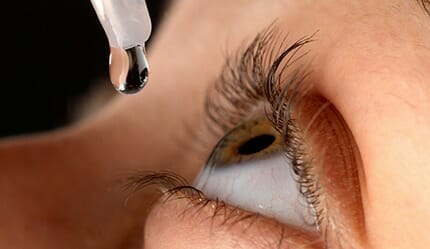Nanowafer Technology Comes to Eye Care

One of the hardest parts of treating an eye condition has to do with patients who do not comply with a proper medication schedule. In these scenarios, the patient will frequently under-dose or misapply the medications, and thus inadvertently interrupt or otherwise prolong the healing process.
But all that may now be changing, and changing for the better. It seems that a brand new technology may ease this problem by embedding a patient’s medication directly into their contact lenses.
How Nanowafer Technology for Contact Lenses Works
Scientists call these drug-delivery systems nanowafers, and they are made of a polyvinyl alcohol resin laden with pockets of medication. They can sit on the sclera, the white of the eye, and don’t need to cover the cornea. Over time, the discs dissolve and deliver time-appropriate doses of medications to the patient.
Since the medication is delivered directly onto the surface of the eyeball, a higher concentration of medicine is applied. At only one-twentieth the thickness of a regular contact lens, the discs will dissolve over a matter of hours or days.
Added Convenience With Nanowafer Technology
In addition to factors related to convenience, this delivery method is considered more efficacious for several reasons. First, nanowafer lenses eliminate problems with forgetting medication times, or problems that a patient may encounter with actually being able to administer the drug, as when driving.
Medications are also delivered directly to the eyeball, so nothing is wasted by splashes, and the drugs are not washed away with tearing. This technology is a welcome advance for doctors who have found that patient compliance is a difficult thing to gauge. Lastly, animal tests in cases of corneal neovascularization have showed a two-fold increase in efficacy when compared to twice-daily eye drops.
In 2008, a group of Canadian glaucoma patients were studied for their compliance with medication schedules. Twenty-five percent missed at least one drop a week due to forgetfulness or some other problem. Seven percent had difficulty using eye drops and would frequently miss their eyeballs altogether. Thirty-four percent had an improper technique and weren’t receiving the full benefit of their medications. These findings were reported in the Canadian Journal of Ophthalmology.
Doctor Concerns
The new nanowafer technology is not without concerns, however. Some doctors are concerned with how the lenses will perform for overall vision. There is also the concern with patient administration of the lenses. That is, not every patient will be comfortable inserting contacts, and new users can often drop or otherwise endanger them.
Further, the system might not be ideal for parents to use with their children, or for persons who may be categorically incapable of using contacts, as in a patient who suffers tremors. However, for seasoned contact-lens wearers, this system may be a welcome relief from the trouble that’s often associated with medicated eyedrops.
As yet, there is no clear date set for when the nanowafers will be available to the market, and scientists are still working to adapt them to treat a wide range of eye injuries, including cystinosis. However, this new technology may soon bring a revolution in opthalmology and the treatment of eye disease.
[Photo Credit: LSHF.org]

